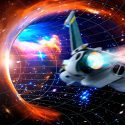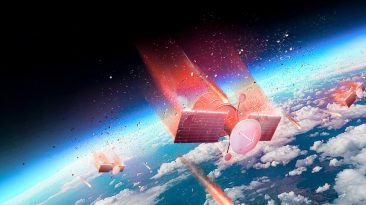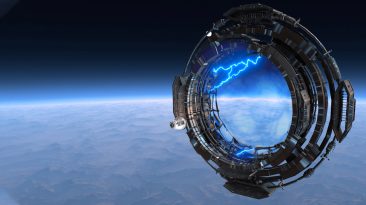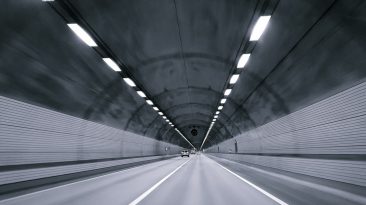Buckle your seatbelts. We’re about to take a ride on the cosmic superhighway. What exactly are these celestial autobahns?
How would they help us explore the furthest parts of our Solar System? And could they change our approach to mapping the cosmos forever?
I know what you’re thinking. And no, we aren’t talking about laying down pavement to build some kind of outer space freeway. Though there is at least one Tesla that would be happy about the idea.
The space pathways we’re talking about are called space manifolds. These are arch-like structures that emerge from the complicated gravitational pull between the Sun, planets and their moons. If you found yourself on one of these many interplanetary jet streams, could you effortlessly cruise our Solar System? Or could one wrong turn slam you headfirst into Jupiter?
We’ve built highways all over Earth. And the only thing you need to get started on your journey would be a road map. When it comes to space, navigating would be a little more complicated. But you could save a lot on fuel.
And let me tell you, it’s not just about saving on fuel money. We might be building highways in space, but we aren’t moving out of Earth just yet. We need to keep our planet healthy.
Now, let’s get back to our interplanetary highways. Like I said, navigating these freeways would be a little complicated. We’ll, quite complicated, I should say.
That’s because you’d be utilizing the concept of gravity assist. This is a reliable technique that is already vital to space exploration.
If you were on a spacecraft using gravity assist, you could travel much further than your launch vehicle could, well, launch you. Imagine using the Sun and planets like a slingshot to propel yourself around the Solar System. You’d add or subtract momentum by increasing or decreasing the energy of your orbit.
These techniques have been applied on previous missions like Voyager 2. This outer planet probe was launched in 1977 and got a trajectory boost from the gravitational pulls of both Saturn and Uranus. And now it’s still speeding through interstellar space after more than 40 years of service.
But navigating the cosmic superhighway system would be a little more complicated than using the gravity of just one planet. These pathways are generated from the complex gravitational interactions between all the planets, their moons and the Sun.
For starters, they’re nearly invisible. If you could spot them, you’d be looking at a network of tubes swirling along with the planets. But just because they are hard to see doesn’t mean you couldn’t try.
It would be important to familiarize yourself with Lagrange points. For any two-body system, like the Earth and the Moon or the Sun and Jupiter, there are five locations in space where the gravitational forces between the two are in equilibrium. Or simply balanced.
If you could place your spacecraft on one of these points, then you’d be able to remain in a stable orbit. No need to worry about being pushed further into space or being pulled in to crash.
And since all two-body systems have these points, that means our Solar System is full of them. As planets orbit the Sun, these points overlap and intersect. So if you’re paying attention, you could time things just right to jump off to another planet’s orbit.
Hopping through space on these superhighways would allow you to save a lot of money on fuel while reaching the outermost parts of the Solar System at breakneck speeds. If you found yourself on the right route, you could travel the 3.7 billion km (2.3 billion mi) from Jupiter to Neptune in less than 10 years.
But I hope you’ve got a few years or even decades to spare just waiting for these points to overlap in a good way. And you’d still going to need a ship big enough for all the cargo you’d be carrying. NASA has estimated that a crew of four on a three-year mission would need to take more than 10,800 kg (24,000 lb) of food.
But if you could use this cosmic highway, trips that usually take hundreds of thousands of years could be reduced to several decades. Even though scientists have utilized these manifolds on previous missions, it’s unlikely they’ll be trying crewed missions anytime soon.
To truly understand the complex map of connections, we’d need to study many of the millions of objects floating through space, like comets and asteroids.
You wouldn’t want to smash into the surface of Jupiter if your calculations didn’t add up.
Sources
- “”A Newfound “Celestial Autobahn” Could Lead To Faster Space Travel In The Future”. 2020. Salon.
- “Invisible ‘arches of chaos’ span the solar system”. 2020. livescience.com.
- “Researchers discover a new superhighway system in the Solar System”. 2020. ucsdnews.ucsd.edu.
- “Basics Of Space Flight – Solar System Exploration: NASA Science”. 2021. NASA Solar System Exploration.
- “Go Space Truckin’ On This Newly Paved Celestial Superhighway”. Spry, Jeff. 2020. SYFY WIRE.
- “Could we send a crewed mission to the outer planets? (Intermediate)”. curious.astro.cornell.edu.



























